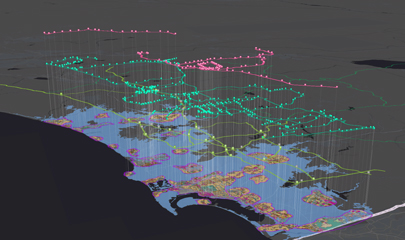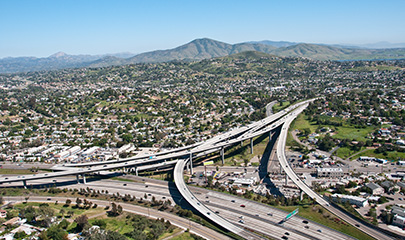The 2021 Regional Plan includes a proposed “phasing plan” for implementing the various projects, programs, and policies over the plan’s 30-year span. The phasing plan is used to measure the Regional Plan’s achievement of state and federal requirements by certain benchmark years. Projects in the 2021 Regional Plan are then funded and implemented through the Regional Transportation Improvement Program (RTIP).
Priority Implementation Actions
SANDAG identified ten priority actions for implementing the 2021 Regional Plan. Appendix B of the 2021 Regional Plan describes the near-term and continuing actions associated with each priority action to continue implementation of the 2021 Regional Plan through 2050.
- Apply the Social Equity Planning Framework and ensure that equity is considered throughout 2021 Regional Plan implementation.
- Develop Comprehensive Multimodal Corridor Plans (CMCPs) to refine the 2021 Regional Plan projects at the corridor level and qualify the region for future funding opportunities.
- Update SANDAG policies, including the TransNet Ordinance, to reflect 2021 Regional Plan projects and policies.
- Evaluate the transition to free public transit and develop a Value Pricing and User Fee Implementation Strategy.
- Seek new local funding in addition to pursuing state and federal funding opportunities.
- Advance the Next Operating System (Next OS) by preparing technical and planning studies and initiating pilot opportunities.
- Implement the Regional Transportation Improvement Program (RTIP) and near-term projects.
- Partner with local jurisdictions, tribal governments, agencies in Mexico, the military, and other agencies on collaborative efforts to implement the 2021 Regional Plan.
- Expand regional programs and seek funding to fully support low-carbon transportation options, roadway safety and maintenance, habitat conservation, and nature-based climate solutions.
- Advance a data science program to better understand travel behavior in the region, update travel demand and modeling tools, and improve transparency and reporting on program effectiveness and project delivery.






















